- Découvrez les collections
- Notice d'oeuvre



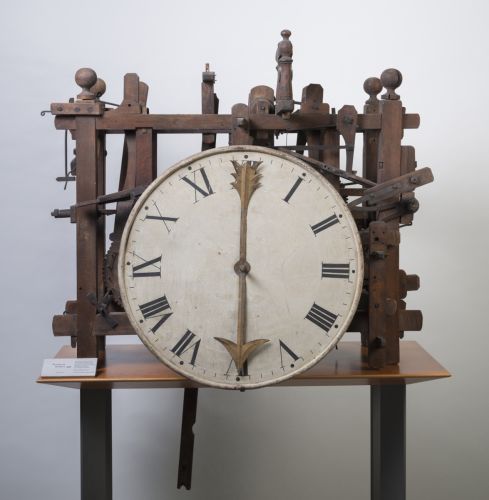
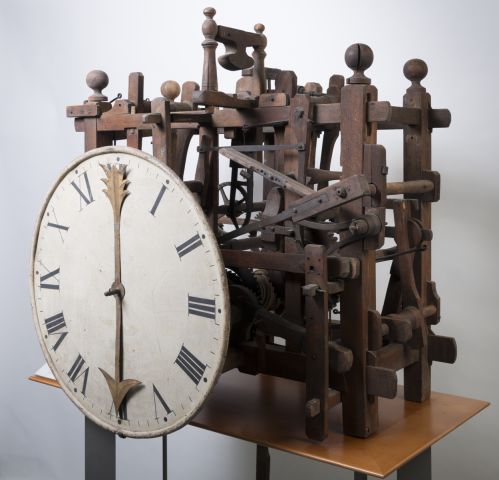
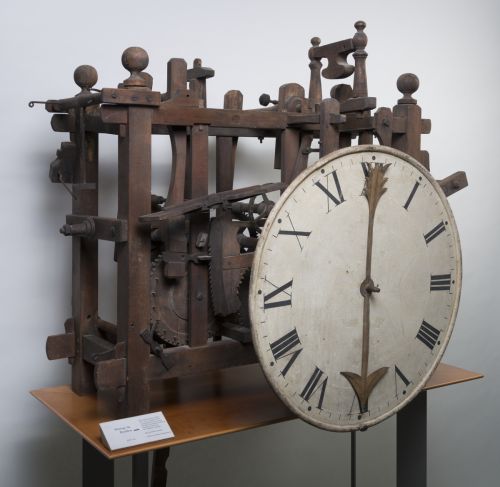
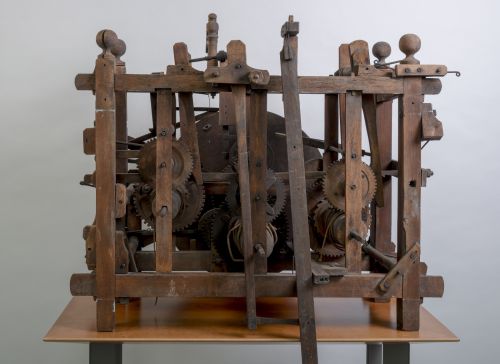
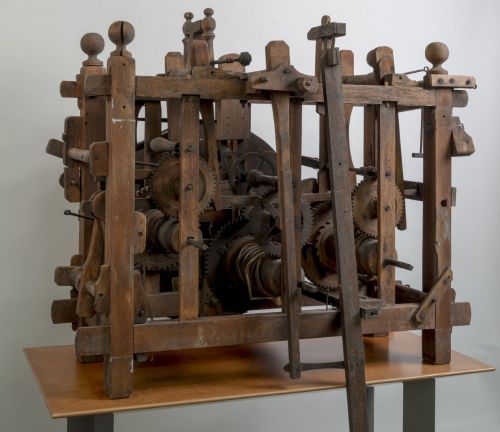
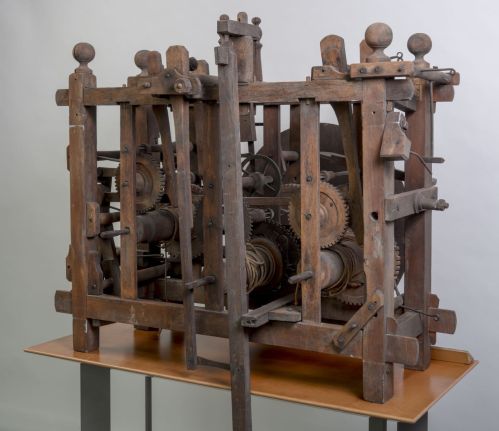
Aller plus loin :
1800 (?) vers
L. 67,5 cm ; H. 91 cm ; l. 107 cm ; VOLUM. 0,6572 ; D. 61,5 cm (cadran)
M0536_2016.0.4
Cette « horloge d’édifice » est un des rares témoin des mécanismes d’horlogerie qui ont rythmé le temps urbain au fronton des mairies ou aux clochers des églises. Son mécanisme, majoritairement en bois, la date approximativement du début du XIXe siècle. Cette datation entre en contradiction avec l’histoire de l’horloge. La porte dans laquelle l’horloge était placée aurait été construite au XIIIe siècle, puis intégrée dans la porte de Rualménil. Selon la tradition, cette dernière devient porte du Boudiou, reprenant le nom de son horloge, peu à l’heure, « menteuse » en patois local. L’horloge dispose de trois rouages verticaux, composés de roues en bois ou en fer, vraisemblablement du XIXe siècle car non forgées. Le premier rouage est celui du mouvement qui indique l’heure sur le cadran et déclenche le rouage de sonnerie. Le rouage de sonnerie à droite, vu depuis le côté pendule, déclencherait les heures tandis que son opposé aurait la double fonction de sonner aux demi-heures et à l’angélus à 12h30. Le cadran ne peut matériellement être celui d’origine car trop petit.
This architectural clock is a scarce example of the type of clock mechanism which displayed the time on town hall pediments and church towers. Its workings, which are mostly made of wood, date from around the early 19th century. This date is at odds with the history of the clock. The gate in which the clock was set was built in the 13th century, then incorporated into the porte de Rualménil. Tradition has it that this gate became the porte du Boudiou, taking its name from the clock which was “boudiou” – unreliable – in the local dialect. The clock has three vertical gear trains comprising cogwheels made of wood and iron dating in all likelihood from the 19th century, as they are not wrought. The first gear train drives the movement which displays the time on the dial and activates the striking train. The striking train on the right, which can be seen from the side of the clock, chimes the hours and its counterpart on the left has the dual function of ringing the half-hours and also the Angelus at 12.30pm. The dial is not original to the clock as it is too small.


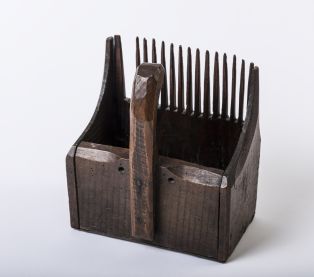
 Copyright© WebMuseo 2017 - 2024
Copyright© WebMuseo 2017 - 2024